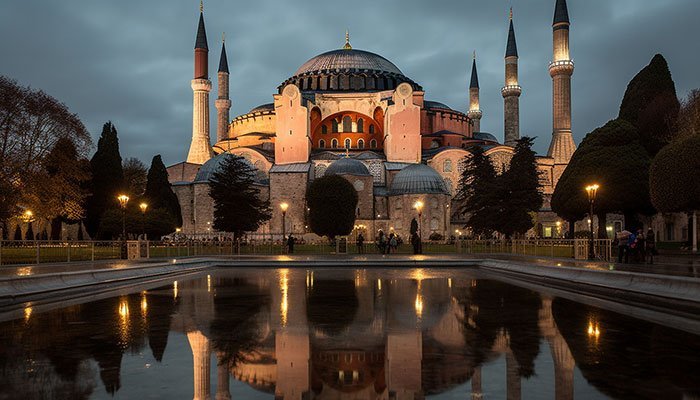
Hagia Sophia
Nestled in the heart of Istanbul, the Hagia Sophia is an architectural marvel that has served as a cathedral, mosque, and museum throughout its long history.
Constructed between 532 and 537 AD under the patronage of the Byzantine Emperor Justinian I, the Hagia Sophia originally served as a cathedral for the Eastern Orthodox Church. With its soaring dome, grand arches, and ornate mosaics, it became the world’s largest cathedral—a title it held for nearly a millennium.
The decline of the Byzantine Empire saw the rise of the Ottomans. In 1453, under the leadership of Mehmed the Conqueror, Istanbul (then Constantinople) was captured, and the Hagia Sophia underwent its first significant transformation. It was converted into a mosque, with minarets piercing the sky and its Christian motifs obscured or altered.
For almost 500 years, the Hagia Sophia resonated with the call to prayer until a new chapter began in 1935. With the founding of modern Turkey, Mustafa Kemal Atatürk, envisioning a secular nation, transformed the Hagia Sophia into a museum. This move was symbolic, marking the nation’s transition and emphasising the importance of coexistence and cultural respect.
The architectural brilliance of the Hagia Sophia cannot be overstated. Its dome, measuring 31 meters in diameter, seems to float effortlessly, supported by an ingenious system of pendentives and semi-domes. Natural light filters in, casting a divine glow upon the interiors and highlighting the intricate mosaics and calligraphy that adorn its walls.
In 2020, a new era dawned as the Hagia Sophia was declared a mosque again; though its doors remain open to tourists, its rich history is still on display.
Further reading: The Hagia Sophia


